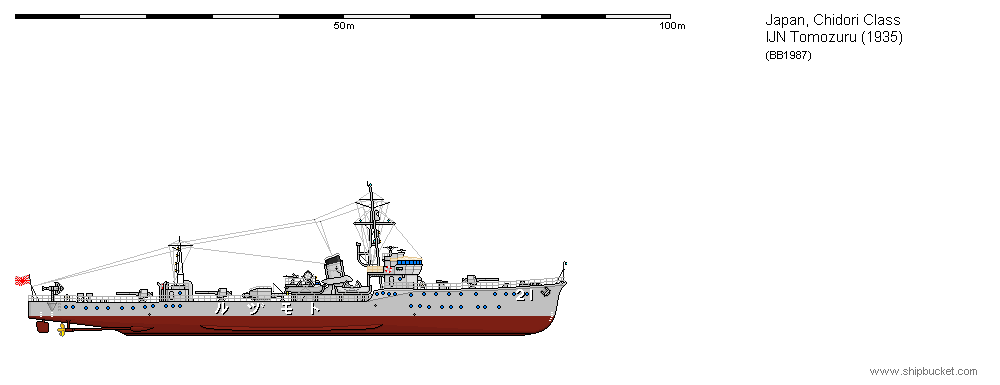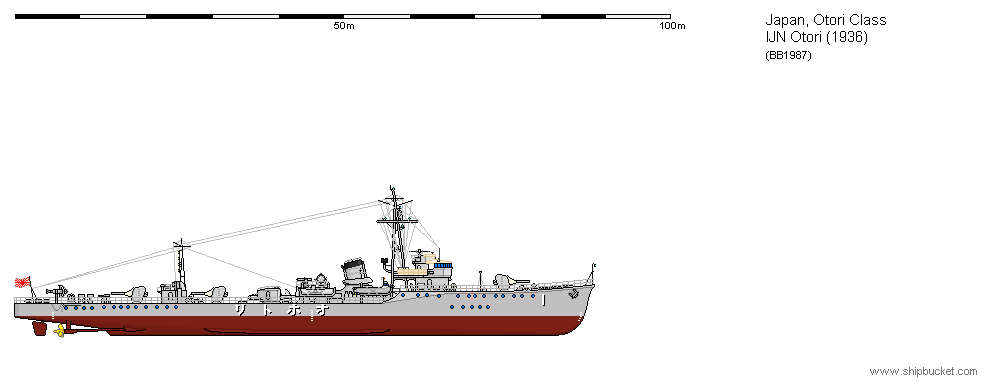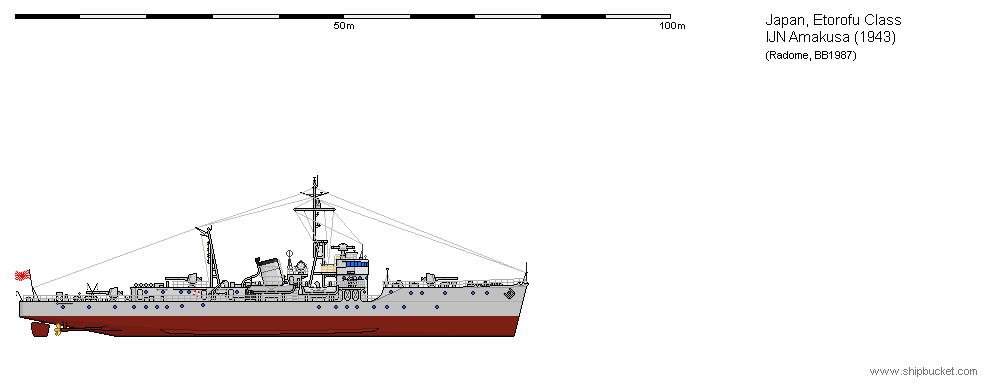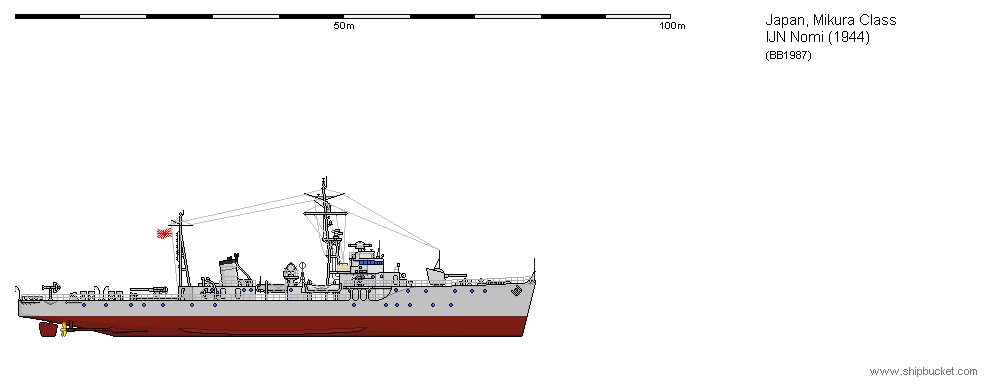The Japanese were quite happy to build torpedo boats, especially when the London 1930 treaty said that sips under 600 standard tons displacement could be built in unlimited numbers. Unfortunately the Japanese style of building of that time produced submarines instead of torpedo boats. Have a read of the Tomozuru Incident.
I love my magic wand. Since the London treaty does not bind the Japanese, they do not have to try and build 600 ton torpedo boats with the traits of a tortoise. They can do as they did with the Minekaze and Momi classes with a reduced version of the Fubuki for the Chidori type. Bigger all round dimensions and displacement allow for a ship with much better staying power. No need to worry about stability problems. Something I have strived to alleviate from the Japanese Navy. Right here with the Chidori class is the pinnacle of instability that got the Japanese looking at what they had built and what they were contemplating building.
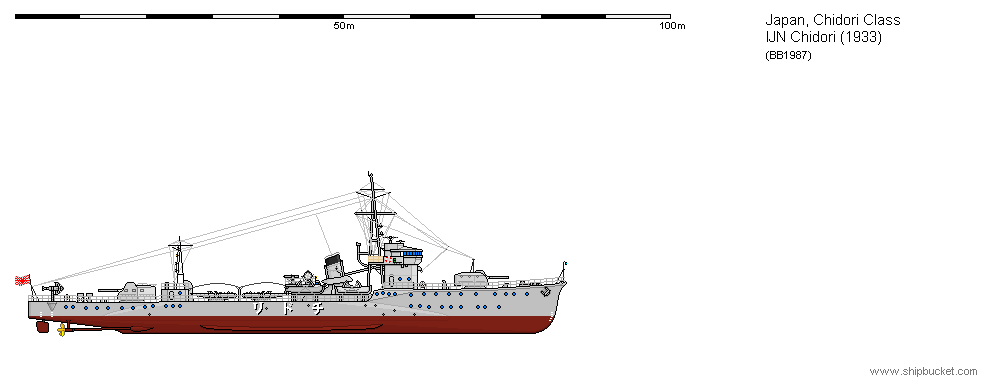
I quite like the look of these ships, single 5" forward, twin 5" aft, one machine gun then four 21" torpedo tubes with 8 reloads. As I have stated in previous designs, I am not a fan of reloads. I have never read anywhere, where a ship has successfully reloaded torpedo tubes while fighting a battle. After the battle has ended would make sense, being fully armed with torpedoes for the next battle. A bit wasted if you fire your torpedoes then get sunk. The biggest reason is, torpedoes are large, with lots of explosive products in them, if a shell hits those you lose the ship, boom. They are also a lot of extra weight to carry around.
If you make the Chidori ten to twenty feet longer and six feet wider, bit more draught, double the displacement, which would give a much more balanced ship.
.png)
What the Japanese were trying to achieve with the real life Chidori was two thirds of a Fubuki on 600 tons, they failed. I am happy with the two thirds of a Fubuki and that is exactly what I have tried to achieve. The major upgrade of 1937 for the type is to replace the lower angle turrets with the Dual Purpose ones that came into service at around that time. A dual purpose director is fitted at that time to make use of the better armament. 1942 the depth charge armament starts to grow in numbers and with delivery systems. The paravanes and minesweeping units are removed and replaced with the extra depth charges.
The Chidori type was built in groups of two and four as funds were released for them to be built. More and more were ordered in 1942-43 but only a few were actually laid down and built.

